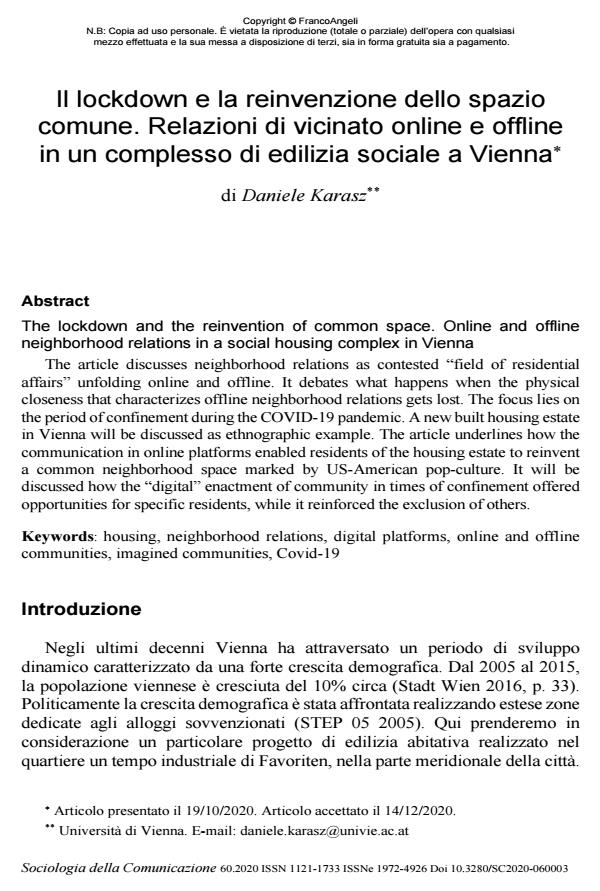The lockdown and the reinvention of common space. Online and offline neighborhood relations in a social housing complex in Vienna
Journal title SOCIOLOGIA DELLA COMUNICAZIONE
Author/s Daniele Karasz
Publishing Year 2021 Issue 2020/60
Language Italian Pages 12 P. 22-33 File size 221 KB
DOI 10.3280/SC2020-060003
DOI is like a bar code for intellectual property: to have more infomation
click here
Below, you can see the article first page
If you want to buy this article in PDF format, you can do it, following the instructions to buy download credits

FrancoAngeli is member of Publishers International Linking Association, Inc (PILA), a not-for-profit association which run the CrossRef service enabling links to and from online scholarly content.
The lockdown and the reinvention of common space. Online and offline neighborhood relations in a social housing complex in Vienna The article discusses neighborhood relations as contested "field of residential affairs" unfolding online and offline. It debates what happens when the physical closeness that characterizes offline neighborhood relations gets lost. The focus lies on the period of confinement during the COVID-19 pandemic. A new built housing estate in Vienna will be discussed as ethnographic example. The article underlines how the communication in online platforms enabled residents of the housing estate to reinvent a common neighborhood space marked by US-American pop-culture. It will be discussed how the "digital" enactment of community in times of confinement offered opportunities for specific residents, while it reinforced the exclusion of others.
Keywords: Housing, neighborhood relations, digital platforms, online and offline communities, imagined communities, Covid-19
Daniele Karasz, Il lockdown e la reinvenzione dello spazio comune. Relazioni di vicinato online e offline in un complesso di edilizia sociale a Vienna in "SOCIOLOGIA DELLA COMUNICAZIONE " 60/2020, pp 22-33, DOI: 10.3280/SC2020-060003